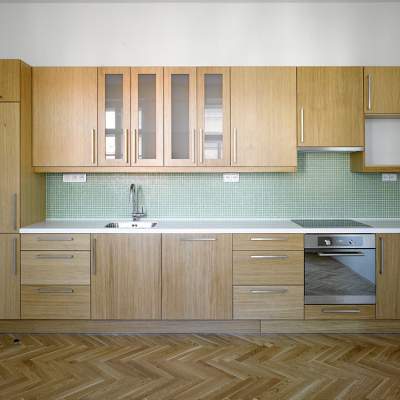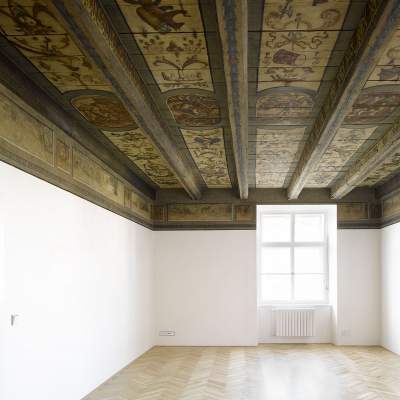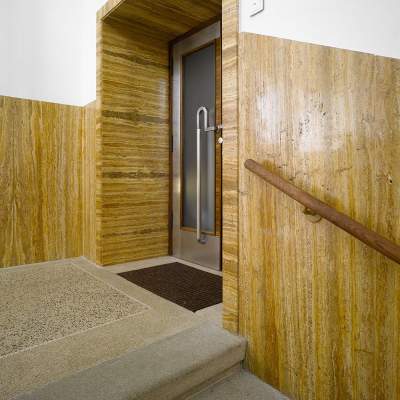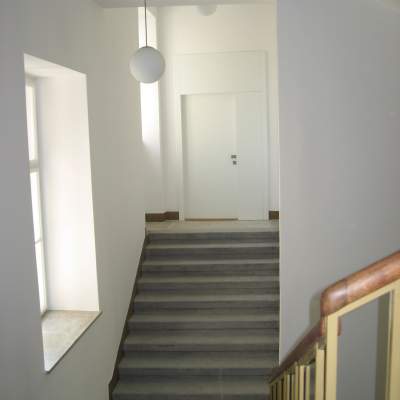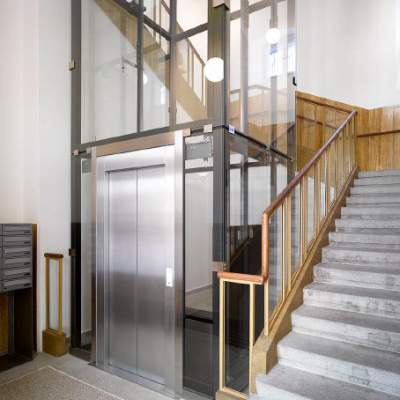Several large luxury flats were built in the building during the complete modernisation of this house improperly used by the National Heritage Institute in Prague in the past.
After the offices had been vacated, the residential function was re-introduced into the building, a detail restorer survey was conducted, and the building was adjusted to modern needs regarding the layout and materials. The survey discovered several valuable items of historic architecture that were preserved and presented in the flats.
The stairwell was renovated as part of the modernisation and the lift was redesigned. A modern glass coat was added to the lift mirroring the restored decorations in the stairwell.
The building is a listed cultural monument of the Czech Republic.
Duke Friedrich of Burgundy had built the Platýz Palace around 1350. As historical records say, the building closely adjacent to the town fortification wall had a tall tower and had the appearance of a castle. Jan Platejs bought the house in 1586 and converted it into a coaching inn with accommodation. Although the house was later re-built many times, it has kept the name until today. Because waggoners with their coaches visited the inn a lot and it turned out to have an insufficient capacity after some time, it was structurally unified into the contemporary four-winged structure with an internal courtyard and stables for 55 horses in the 19th century.
The inn was here until the end of the middle of the 20th century when the Slávia bank bought it and converted it into a modern tenement house in 1938-1939.
A small statue of an owl remains on the façade from the time the house was an inn; it was a sign showing vacancies in the inn. It is a reminder of an ancient gatekeeper who used to have a pet owl accompanying him during night shifts, very popular among waggoners and wayfarers. When the gatekeeper died, the proprietor ordered a statue of a small owl in his honour and had it installed at the exit to Národní třída.


